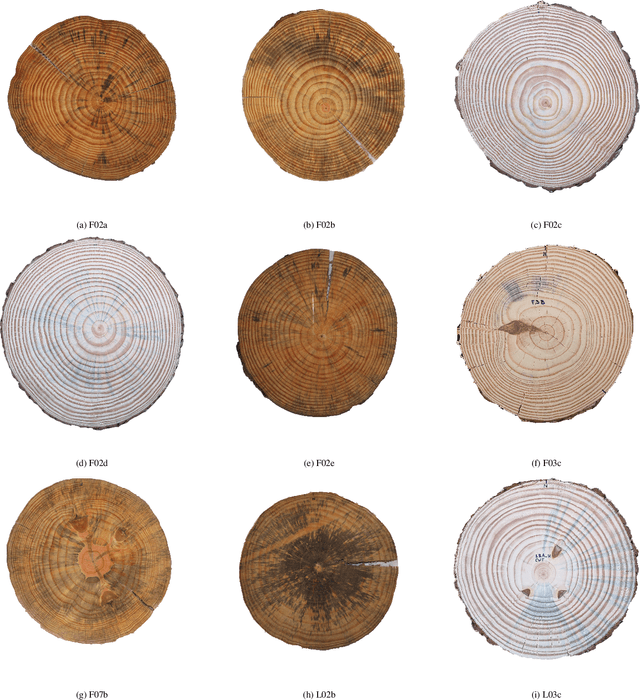Christine Lucas
UruDendro, a public dataset of cross-section images of Pinus taeda
Apr 16, 2024



Abstract:The automatic detection of tree-ring boundaries and other anatomical features using image analysis has progressed substantially over the past decade with advances in machine learning and imagery technology, as well as increasing demands from the dendrochronology community. This paper presents a publicly available database of 64 scanned images of transverse sections of commercially grown Pinus taeda trees from northern Uruguay, ranging from 17 to 24 years old. The collection contains several challenging features for automatic ring detection, including illumination and surface preparation variation, fungal infection (blue stains), knot formation, missing cortex or interruptions in outer rings, and radial cracking. This dataset can be used to develop and test automatic tree ring detection algorithms. This paper presents to the dendrochronology community one such method, Cross-Section Tree-Ring Detection (CS-TRD), which identifies and marks complete annual rings in cross-sections for tree species presenting a clear definition between early and latewood. We compare the CS-TRD performance against the ground truth manual delineation of all rings over the UruDendro dataset. The CS-TRD software identified rings with an average F-score of 89% and RMSE error of 5.27px for the entire database in less than 20 seconds per image. Finally, we propose a robust measure of the ring growth using the \emph{equivalent radius} of a circle having the same area enclosed by the detected tree ring. Overall, this study contributes to the dendrochronologist's toolbox of fast and low-cost methods to automatically detect rings in conifer species, particularly for measuring diameter growth rates and stem transverse area using entire cross-sections.
 Add to Chrome
Add to Chrome Add to Firefox
Add to Firefox Add to Edge
Add to Edge